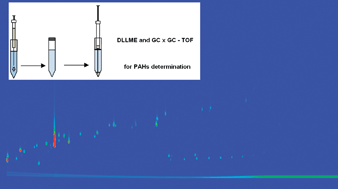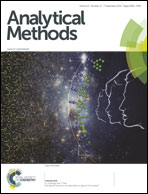Determination of parent and methylated polycyclic aromatic hydrocarbons in water samples by dispersive liquid–liquid microextraction–two dimensional gas chromatography–time-of-flight mass spectrometry
Abstract
Polycyclic aromatic hydrocarbons (PAHs) are contaminants frequently found in environmental waters. Owing to their toxic effects, it is important to develop analytical methodologies that allow their fast and reliable determination. Dispersive liquid–liquid microextraction (DLLME) allows a quick extraction of analytes with little organic solvent consumption. The best results regarding sample preparation are obtained when 40 μL of perchloroethylene is used as the extractant solvent and 1 mL methanol is used as the dispersive solvent; the extraction occurs one minute. Two-dimensional gas chromatography allows good separation of most PAH isomers. The methodology is characterized by good precision (<20% for the most of analytes) and recoveries (73–133%), while the LOD values (single ng L−1 for lighter PAHs) rapidly increase with increasing molar mass of the analytes. The methodology greenness assessment with NEMI and Ecoscale have shown that it may be considered as a green methodology. Real sample analysis proved that the procedure is convenient for PAHs determination in environmental and drinking water.


 Please wait while we load your content...
Please wait while we load your content...